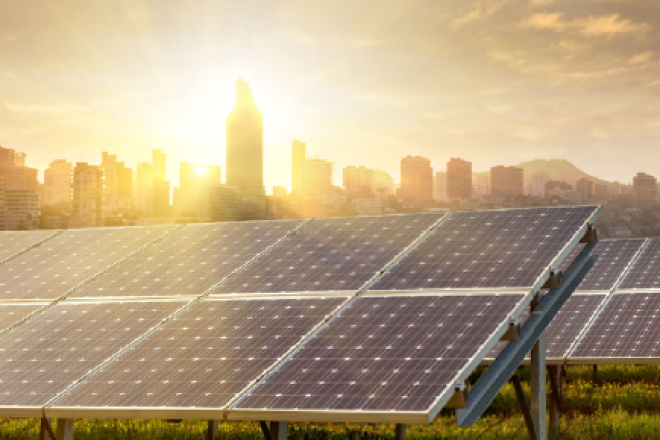
Smart Grid and Power Quality
What is power quality?
Power quality refers to electricity that consistently meets the agreed-upon specifications for optimal and efficient use in home electronics. In North America, home appliances and electronics are designed to operate within a range of 106 volts to 127 volts of alternating current (AC). However, equipment operates most efficiently in a range of 114-126 volts, which is the standard for delivered voltage in North America.
Utilities also manage a number of other components of power quality, including:
- Frequency, which is set at 60 Hz in North America; and
- Power factor, which measures how much of the electricity delivered is actually useable by customers.
 Voltage and power factor, in particular, are very dependent on how many customers are on an electrical line, and how much they are using. For example, if every house in a neighborhood is running their air conditioning, voltage at the last house in the neighborhood circuit could be at—or even below—114 volts. This low voltage condition can cause problems with electric equipment in that house.
Voltage and power factor, in particular, are very dependent on how many customers are on an electrical line, and how much they are using. For example, if every house in a neighborhood is running their air conditioning, voltage at the last house in the neighborhood circuit could be at—or even below—114 volts. This low voltage condition can cause problems with electric equipment in that house.
Why is power quality important?
Today’s modern and sensitive electronics demand a steady voltage and frequency, a considerable change from electronics in the 1960s. Higher than normal voltage causes electronic equipment to operate inefficiently, and may even cause damage to certain equipment. Low voltage has similar impacts, and may cause equipment to work erratically or not at all, like when you turn on your vacuum and your lights dim momentarily. This is especially true of digital electronic equipment such as computers and TVs. Digital equipment relies on low-voltage (usually around 5 volts) direct current to operate. In order to get this type of electricity, digital electronics rely on a transformer—either as part of their plug (the typical “wall wart” pictured at left) or built into it like on a desktop computer. If a digital device isn’t able to get the right voltage, it simply won’t work.
This is especially true of digital electronic equipment such as computers and TVs. Digital equipment relies on low-voltage (usually around 5 volts) direct current to operate. In order to get this type of electricity, digital electronics rely on a transformer—either as part of their plug (the typical “wall wart” pictured at left) or built into it like on a desktop computer. If a digital device isn’t able to get the right voltage, it simply won’t work.
Additionally, research has found that every 1 percent change in voltage has a corresponding 1 percent change in power usage. As a result of these factors, utilities strive to keep the voltage that’s delivered to your house within the standard range.
How does the Smart Grid help improve power quality?
The Smart Grid includes several components that help utilities better deliver quality power to your home: smart meters and technology on the distribution grid that helps manage voltage and power factor.
Smart meters are advanced electric meters that provide both you and your utility with more information about the power delivered to your home. Like other digital devices, they include a transformer to step down voltage for the digital electronics. Also like other digital devices, they are engineered to meet strict FCC requirements to keep from interfering with other electronic or communications equipment.
Smart meters allow your utility to see what the actual voltage delivered to your home is. Before smart meters, utilities would base their equipment settings on voltage readings at an electric substation and engineering estimates of what that would mean for actual voltage at each customer’s home. They would often set voltages unnecessarily higher to ensure that the last home on a line didn’t receive voltage below 114.
With actual information on voltage, utilities can use Smart Grid technology to optimize the voltage for every customer they serve—settings are based on actual customer voltages rather than engineering estimates, which enables a more efficient and accurate supply of power.

Smart Grid: More Efficient, Higher Quality Power
More information and the ability to manage voltages in real-time allow utilities with Smart Grid technology to operate their electrical grid within tighter tolerances. This provides you with a more reliable and efficient power supply that allows your appliances and other electronic devices to operate at their highest efficiencies and minimizes your cost to run them.
Download this fact sheet.
Watch the video.



